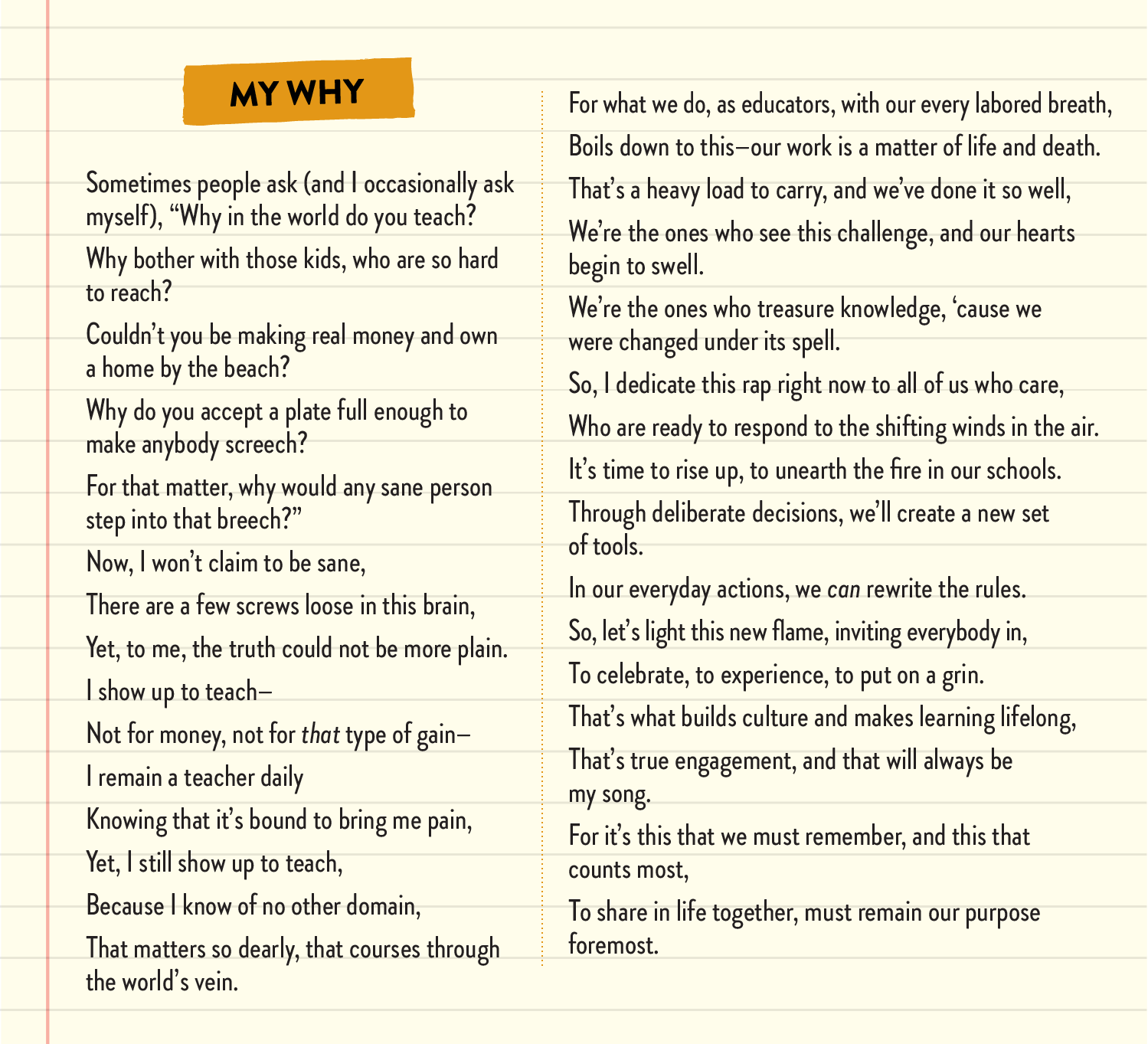Originally published in TEACH Magazine, May/June 2024 Issue
By Paul Weatherford

The Hook
I, among other things, define myself as a rapper, and it’s a fact of which my students are all too aware—“Is he really rapping on the first day of school?” I use raps to hook my readers (did it work?), to bring literary characters to life, to commemorate momentous occasions, and, most of all, to inject the world inside and outside of the classroom with a bit of the extraordinary.
Each day that I teach at South High School, I walk into a building that the state department of education deems “failing,” and yet within those walls, I encounter many moments that sing of success, especially in my Creative Writing class. A recent activity that I came up with helped bring hope, community, confidence, and critical thinking to the students. I turned to my good ol’ friend hip-hop to accompany me on this journey and, as it always does, hip-hop brought us together, enhanced our own unique voices, and allowed us to have some fun.
Paul Weatherford has taught at all levels from 7–12 over the past 10 years. In addition to completing a Master’s degree in English Literature, he recently won Teacher of the Year for Laramie County School District #1, and was a TOY finalist for the state of Wyoming. Inspiring students to see the magic of words is his life’s work, second only to being a husband and father.

